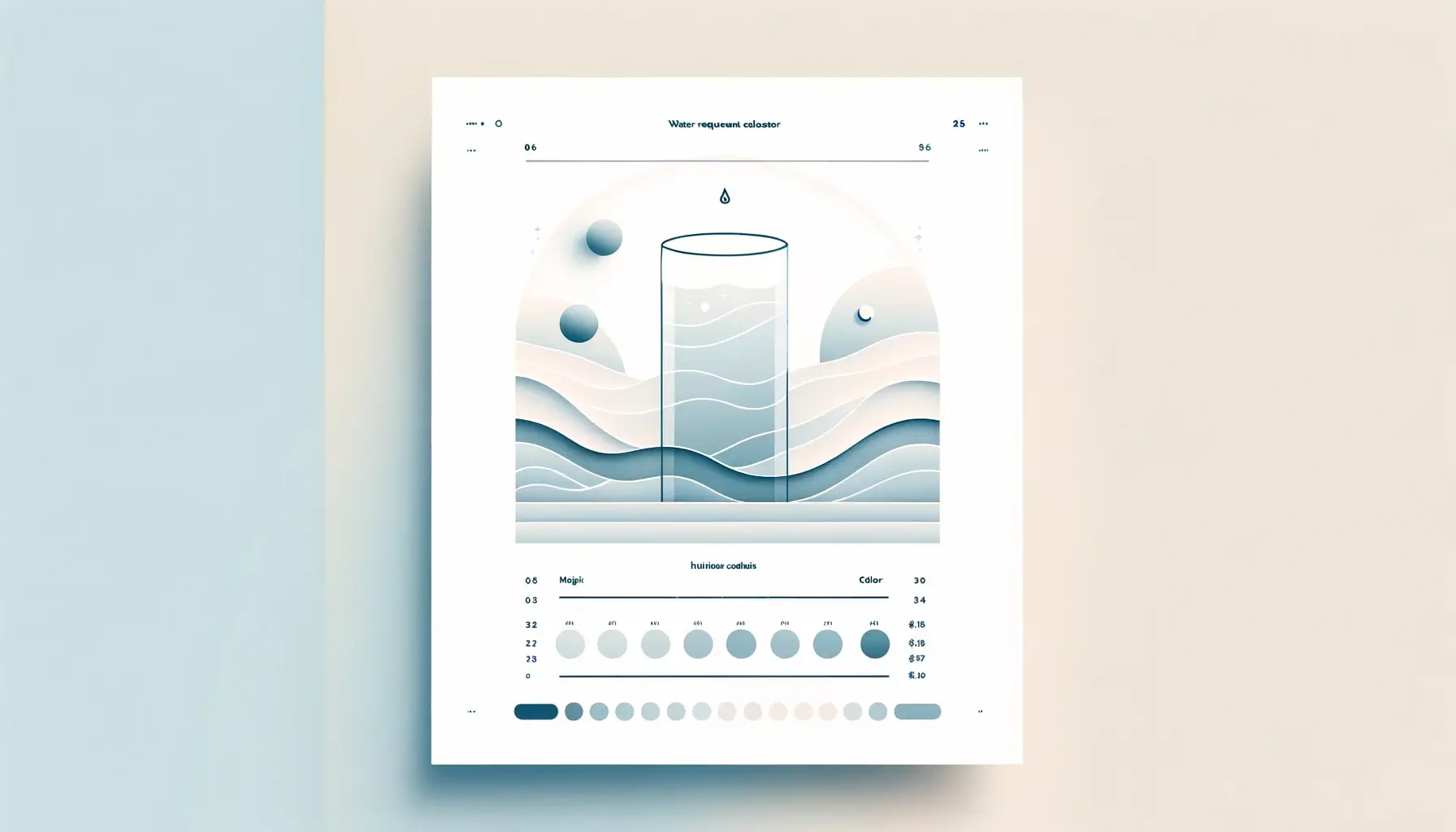Staying adequately hydrated is fundamental for overall health. A Water Requirement Calculator aids individuals in estimating how much water they need daily, guided by factors like age, weight, activity level, and environmental conditions. By automating a potentially confusing process, this tool helps users maintain optimum fluid balance and supports a healthier lifestyle. Below is a detailed examination of water requirements, why a calculator is beneficial, and how to use one effectively.
Introduction to Daily Water Intake
Water is crucial in almost every bodily function—from regulating temperature and transporting nutrients to aiding digestion and lubricating joints. However, the exact volume of water required per day can vary widely between people. Factors like ambient temperature, level of physical exertion, and even dietary habits (salty or protein-heavy diets may demand more water) influence personal needs.
Why Monitor Water Intake?
- Prevents Dehydration: Chronic mild dehydration can lead to fatigue, headaches, or impaired concentration.
- Supports Organ Health: Kidneys rely on sufficient hydration to remove waste efficiently.
- Regulates Weight: People tracking weight loss or muscle building frequently note that stable hydration aids appetite control and workout performance.
The Role of a Water Requirement Calculator
A Water Requirement Calculator automates the process of estimating a daily fluid goal. Typically, users input data such as body weight, physical activity duration/intensity, and environmental factors (hot climate or high altitude). Some tools further refine the result by considering pregnancy/lactation or unique dietary constraints. The calculator provides a straightforward, user-friendly guideline by delivering an easy-to-read figure—often in liters or ounces.
Benefits of Using the Calculator
- Time-Saving: Rather than memorizing or referencing multiple guidelines, the calculator rapidly combines data to yield a personalized suggestion.
- Reduced Risk of Under/Over-Hydration: People who systematically track water intake can better dodge dehydration or the rarer but still possible overconsumption.
- Behavioral Prompt: Seeing a numeric target can encourage consistent sips throughout the day, bolstering hydration habits.
- Adaptability: In adjusting for factors like altitude or exercise, the calculator acknowledges that a “one-size-fits-all” approach is insufficient for water needs.
Key Inputs Affecting Water Need
While the exact tool may differ, some typical data points include:
- Body Weight: Heavier individuals have larger fluid volumes, necessitating more water.
- Activity Level: Intense workouts or extended physical labor require higher intake to offset sweat losses.
- Ambient Conditions: Hot climates or high altitudes heighten fluid demands due to sweat evaporation or other physiological changes.
- Age and Health: Older adults or those with kidney issues might need adjusted targets, though these complexities often require medical judgment beyond a simple calculator.
How to Use the Calculator
- Gather Information: Know your approximate weight and daily activity routine, and note any extreme environment or health specifics.
- Enter Data: Input these details into the calculator’s fields; advanced versions may also request age or dietary style.
- Review Results: The calculator outputs a recommended daily water intake—commonly in liters or ounces.
- Apply Wisely: Remember this figure is a guideline, not a strict rule. Monitor thirst levels and medical advice if relevant, especially if you have conditions affecting fluid balance.
Practical Applications
- Fitness and Weight Management: Gyms or personal trainers often incorporate water targets into overall workout plans, ensuring consistent hydration for performance.
- General Health Routines: Busy professionals might set daily water reminders around the calculator’s guidance, boosting overall energy and focus.
- Outdoor Activities or Travel: Hikers or travelers heading to hot locations frequently rely on higher-than-normal fluid estimates to prevent dehydration.
- Corporate Wellness Programs: Employers may encourage staff to use these calculators to maintain workforce health and productivity, especially in shift-based or physically demanding roles.
Challenges and Limitations
- Individual Variation: Some individuals may sweat more or have unique medical conditions (e.g., heart failure, kidney disease) that require customizing or ignoring general guidelines.
- Quality vs. Quantity: The calculator focuses on fluid volume but does not track source quality (plain water vs. sugary drinks). Over-reliance on sodas or juices may introduce excess calories.
- Instant Changes: If you’re ill (e.g., diarrhea, fever), daily water requirements can shift drastically. A static calculator might not adapt to acute health conditions.
- Taste and Habit Factors: Personal preferences or forgetfulness can hamper actual consumption even if the calculator sets a target.
Best Practices for Sustaining Hydration
- Spread Intake Throughout the Day: Consuming small amounts regularly is gentler on the system than gulping large volumes at once.
- Pay Attention to Thirst and Urine Color: Simple signals (dark urine, dryness in mouth, feelings of fatigue) complement calculator estimates.
- Consider Food Sources: Fruits, vegetables, and soups also contribute to total fluid intake.
- Reevaluate Periodically: Activity routines, weight changes, or environmental shifts may require recalculating or adjusting the daily fluid target.
Future Trends
- Smart Bottle Integration: Apps or devices track real-time water consumption, adjusting recommended daily intake if abnormal heat or activity is detected.
- IoT and AI: Wearables analyzing sweat rates could feed data to AI-driven calculators, delivering dynamic and near-real-time hydration tips.
- Global Collaboration: Tools featuring multi-language support, local climate data, and integrated tips might help reduce dehydration risks in regions facing extreme temperatures or limited water access.
- Medical Linkages: As telehealth grows, healthcare providers might integrate water intake prescriptions with the user’s digital records to monitor hydration in high-risk groups.
Conclusion
A Water Requirement Calculator is a straightforward yet vital resource that helps everyday individuals and professionals gauge how much water their bodies likely need. Factoring in variables like weight, activity level, and environment promotes informed decisions that support better health, energy levels, and overall well-being. While not a substitute for clinical judgment or personal cues of thirst, it offers a robust starting point for maintaining stable hydration, essential in modern life’s demanding routines and diverse climates.


